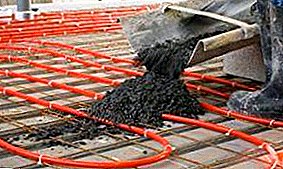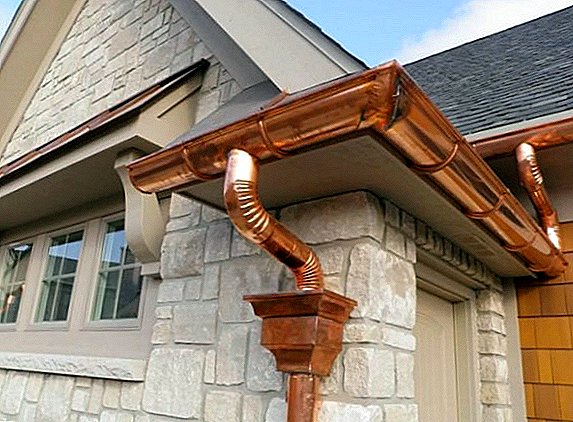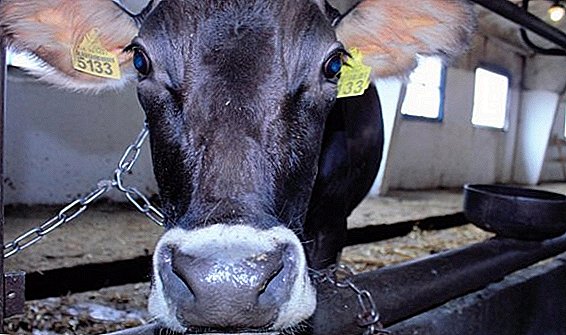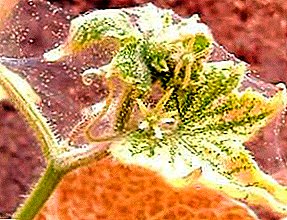
Greenhouses were created by man in order to be able to cultivate cultivated plants, regardless of the time of year outside the window.
One of the most important issues related to the cultivation of the soil behind the glass greenhouse, is "How to ensure optimum microclimateable to support the growth and well-being of plants even in extreme cold? "
To do this, pay attention to the different ways of heating the soil. In this article, you are presented with various types of heating of greenhouses due to warm soil, which you can do yourself.
What is the need for ground heating in a greenhouse?
Heated ground in the greenhouse has quite a number of advantages:
- Rapid ripening and crop growth;
- The possibility of thermoregulation, creating a special microclimate necessary for growing new crops, more fastidious or thermophilic;

- Growing seedlings in a colder time;
- Extended harvest period;
- Heating the soil accelerates the development of roots, rhizomes, tubers and other underground organs, which significantly strengthens the plants;
- Many soil heating devices can also have a small bactericidal effect;
- Energy savings: most modern heating systems have an extremely high efficiency (about 90%).
Soil Heaters perform their function without reducing the oxygen content in the air, which significantly saves the cost of ventilation. So the heated greenhouse is not only convenient, but also profitable. Moreover, the heating of the soil in the greenhouse with his own hands - it is available to everyone.
What are the soil heating systems?
So, to organize a warm floor in the greenhouse, you need to understand what is the heating of the soil. It is of several types.
Water heating. Many have a question, is it possible to organize the heating of the soil in the greenhouse with the help of water? Yes, definitely. The principle of such a system is similar to the principle of a warm water floor, through which hot water circulates through pipes. Otherwise, it is heating the soil in the greenhouse with plastic pipes.
Best used water heating for large greenhouses and greenhouses, as well as for buildings located in close proximity to a residential house.
Heated This type of heating system is quite popular due to the fact that all components, such as heating cables, films and mats, are quite common in our time.
So, it will not be difficult to get and mount the soil heating system, based on the above-mentioned electrical elements. but price of these components and tariffs for electricity can be high enough.
Bioheating The most economical type of heating. The basis of soil bio-heating is a biomaterial (for example, manure, sawdust or fallen leaves), which decomposes with the release of heat.
 Soil bioheating is not only a creation optimum temperature for growing plants in cold seasons, it is also an additional fertilizer.
Soil bioheating is not only a creation optimum temperature for growing plants in cold seasons, it is also an additional fertilizer.
For the best effect, not pure materials should be used, but their combinations: manure with straw, sawdust with bark, sawdust with manure and bark. Before you put the biomaterial in the ground for the greenhouse with your own hands, you need to steam it.
What is the best way to provide heating in the greenhouse? There are several ways of heating: processing by quicklime, boiling water or heating in the sun in a loosened form. Biofuel is ready for use when steam starts to emit from it.
Disadvantages: firstly, the fact that the temperature can be reached relatively small (up to 25 degrees Celsius), which will gradually fall over several months. Secondly, it is impossible to regulate the temperature in the greenhouse.
The soil in the greenhouse:heating with heat guns. Such a unit as a heat gun is perfect for heating a large greenhouse, but the cost of the equipment is high and the soil is heated only on the surface. In our article, we focus on the warming of the ground.
We will tell about its installation in detail in the next section.
Water floor heating do it yourself
As already said soil heating system laying pipes with hot water circulating through them will be most effective if they are located near a house with a local source of hot water. In this case, as a water heater, you can use a domestic hot water boiler or boiler. 
If the greenhouse is at a great distance from the apartment building, then you can lay pipes from the house to the greenhouse under the ground.
For this, additional forces and resources will have to be spent in order to isolate the pipes that run along the street.
And also to install an additional heating apparatus directly for the greenhouse.
Elements of the heating system:
- heating boiler or stove;
- pipes;
- expansion tank;
- chimney;
- circulation pump.
For the circulation of water is not necessarily the action of the pump. In budget versions, water heating usually operates due to the difference between the pressures of hot and cold water.
The expansion tank can be either open or closed. It is necessary and can be both purchased and welded independently.
Type of heating boiler can be different:
- a gas boiler;
- electric heating boiler;
- solid fuel boiler;
- stove made of brick or metal on coal or wood.
The last option is most convenient both in terms of economyand in terms of ease of installation. It is easy to collect a small brick stove with your own hands, and you can use not only coal and firewood, but also sawdust and any other wooden and paper household garbage as fuel.
In accordance with the selected heating source, the chimney is also selected:
- ordinary brick chimney;
- from a mixture of asbestos and cement;
- metal pipe;
- two-sided "sandwich" pipe.
A photo
Look at the photo: heating the soil in the greenhouse with your own hands, water heating scheme,




Installation of soil heating system
- Oven or boiler can be installed both in the waiting room of the greenhouse, and directly inside, the main thing is to build a foundation for them. A concrete foundation is best for a brick stove, and for metal from a sheet of steel or a covering material made from a mixture of asbestos and cement.
ATTENTION: The most important thing is to ensure the construction of maximum stability and to comply with all fire safety measures.
- Chimney pipe. The seams between the parts of the smoke pipe and the gaps in the joints with the furnace or boiler must be sealed to prevent smoke from entering the greenhouse. When sealing joints with a solution, it is necessary to use clay, since it is the most heat-resistant.
- Only connect to the outlet and the inlet of the boiler metal pipeshaving the same diameter, and the length of the pipes may vary. Plastic pipes can only be installed at a distance (at least 1-1.5 meters) from the boiler.
- Before you start the installation of the grounding element itself, it is set expansion tank. It should be located at the highest point of the building, not far from the stove or boiler. For maximum safe operation, an automatic air shut-off valve and a pressure gauge are installed.
 We proceed directly to the installation of the grounding element itself:
We proceed directly to the installation of the grounding element itself:
- At the base of the greenhouse fit thermal insulation material. The most economical option is a foam layer with a layer of 0.5 cm. For the greatest efficiency, it is recommended to install insulators with foil: penofol, isolon, etc.
The alternative is special matsThey are used to make warm floors for the greenhouse. They not only protect against the loss of heat and energy, but also allow the pipes with hot water to be fixed most reliably.
- On the film are placed pipes for water from plastic.
ATTENTION: Do not use steel tubes because of the soil moisture, they will corrode, which leads to the destruction of pipes and soil contamination.
It is also better not to use pipes with low heat transfer, since such pipes emit a minimum of heat. It is necessary to lay pipes starting from the walls, gradually moving towards the center of the room.
With this arrangement, the processes of cooling and energy transfer from the pipes to the soil will occur evenly over the entire area of the greenhouse.
- Pipes are connected to heating system. It is also recommended to install a thermostat on the heater so that the water temperature can be automatically controlled.
ATTENTION: Safe and beneficial temperature for plants - from 35 to 40 degrees Celsius.
- Water heating pipes are filled with a layer of soil of about 40-50 cm. This thickness is optimal for plants, as it prevents thermal damage to the roots.
At first glance, heating the greenhouse soil may seem difficult.
Naturally, for the installation of such structures will require certain tools and skills, but by applying all your perseverance and information from our article, you will certainly succeed and get rewarded in the form of a blooming greenhouse garden in the winter cold as in summer.
Also read all about how to make a winter greenhouse with heating soil, here.












